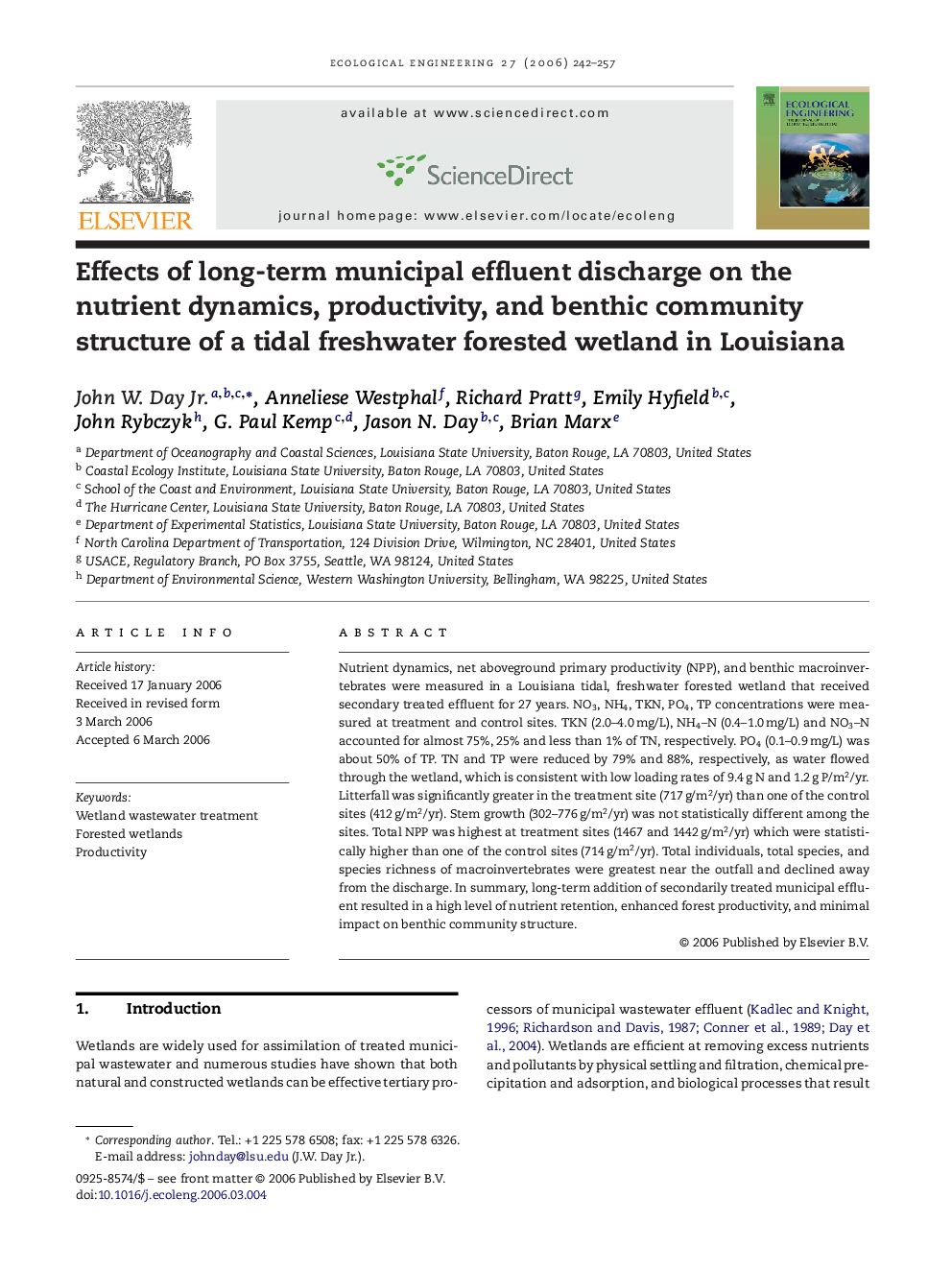| Article ID | Journal | Published Year | Pages | File Type |
|---|---|---|---|---|
| 4391300 | Ecological Engineering | 2006 | 16 Pages |
Nutrient dynamics, net aboveground primary productivity (NPP), and benthic macroinvertebrates were measured in a Louisiana tidal, freshwater forested wetland that received secondary treated effluent for 27 years. NO3, NH4, TKN, PO4, TP concentrations were measured at treatment and control sites. TKN (2.0–4.0 mg/L), NH4–N (0.4–1.0 mg/L) and NO3–N accounted for almost 75%, 25% and less than 1% of TN, respectively. PO4 (0.1–0.9 mg/L) was about 50% of TP. TN and TP were reduced by 79% and 88%, respectively, as water flowed through the wetland, which is consistent with low loading rates of 9.4 g N and 1.2 g P/m2/yr. Litterfall was significantly greater in the treatment site (717 g/m2/yr) than one of the control sites (412 g/m2/yr). Stem growth (302–776 g/m2/yr) was not statistically different among the sites. Total NPP was highest at treatment sites (1467 and 1442 g/m2/yr) which were statistically higher than one of the control sites (714 g/m2/yr). Total individuals, total species, and species richness of macroinvertebrates were greatest near the outfall and declined away from the discharge. In summary, long-term addition of secondarily treated municipal effluent resulted in a high level of nutrient retention, enhanced forest productivity, and minimal impact on benthic community structure.
